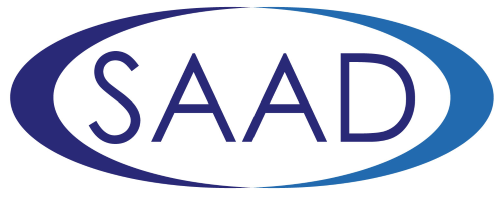Below are some on the questions frequently asked of SAAD
-
Training FAQs
I am a ‘new starter’, after attending the SAAD National Course will I be able to provide sedation for my patients?
Attending the SAAD National Course provides knowledge and skills training, however on its own, it is not sufficient training for you to provide sedation independently. As a new starter, unless you have completed a university or deanery (HEE) run training scheme, in order to comply with the training requirements of the IACSD Standards (April 2015), you would also need to complete supervised clinical practice either as part of a STAC accredited training scheme such as the SAAD Assessed Sedationist (SAS) scheme, or with a STAC approved supervisor.
I have attended the SAAD National Course but did not register for the SAAD Assessed Sedationist (SAS) scheme. How can I complete my training?
It is not possible to register for the SAS scheme after attending the National Course. The SAAD National Course has provided the knowledge and skills training, in order to complete your sedation training, in accordance with the training requirements of the IACSD Standards (April 2015), you now need to complete supervised clinical practice with a STAC approved supervisor. There are further details of how a supervisor can apply for approval from STAC on the RCSEng website.
I want to register for the SAS scheme but I don’t know anyone who can supervise me. Does SAAD have a list of supervisors?
The SAAD training scheme does not include provision of clinical supervisors and SAAD is not able to provide a list of suitable supervisors. This is because SAAD can only approve supervisors for a named individual, registered for the SAS scheme, at a named sedation facility.
My principal was approved by SAAD to supervise my colleague who is on the SAS scheme, can she/he also supervise me?
The SAS scheme is a STAC accredited training scheme. This accreditation allows SAAD to approve supervisors for a named individual, registered for the SAS scheme, at a named sedation facility. The approval is specific and not transferable. In order to supervise you, your principal could apply for STAC approval. There are further details of how a supervisor can apply for approval form STAC on the RCSEng website.
Can I attend the SAAD National Course and then register for the SAS scheme once I am working at a practice that provides sedation?
The assessments for the SAS scheme take place on the National Course weekend and so it is not possible to register for the SAS scheme after attending the SAAD National Course. The supervised clinical practice component of the SAS scheme directly follows attendance of the SAAD National Course, with all of the documents submitted within twelve months of attending the National Course. The SAS scheme is outlined in an article in the SAAD Digest.
My practice only provides IHS, can I still complete the SAS scheme?
The SAAD National Course provides the knowledge and skills training for both IHS and IVS, and the written assessment for the SAS scheme will also cover both techniques. However it is acceptable for the supervised clinical practice to be for one or both techniques (10 IHS cases and/or 20 IVS cases). Your certificate of completion will name the sedation technique for which you have completed supervised clinical practice.
I have been providing IVS for my patients for a number of years and I am covered by the ‘transitional arrangements’ in the IACSD standards. Can I also provide IHS without undergoing further training?
Since your previous experience is with IVS and not IHS, you would be considered as a ‘new starter’ for IHS. As a new starter, in order to comply with the training requirements of the IACSD Standards (April 2015), you would need to complete a STAC accredited training scheme such as the SAAD Assessed Sedationist (SAS) scheme before you can independently provide IHS for your patients.

